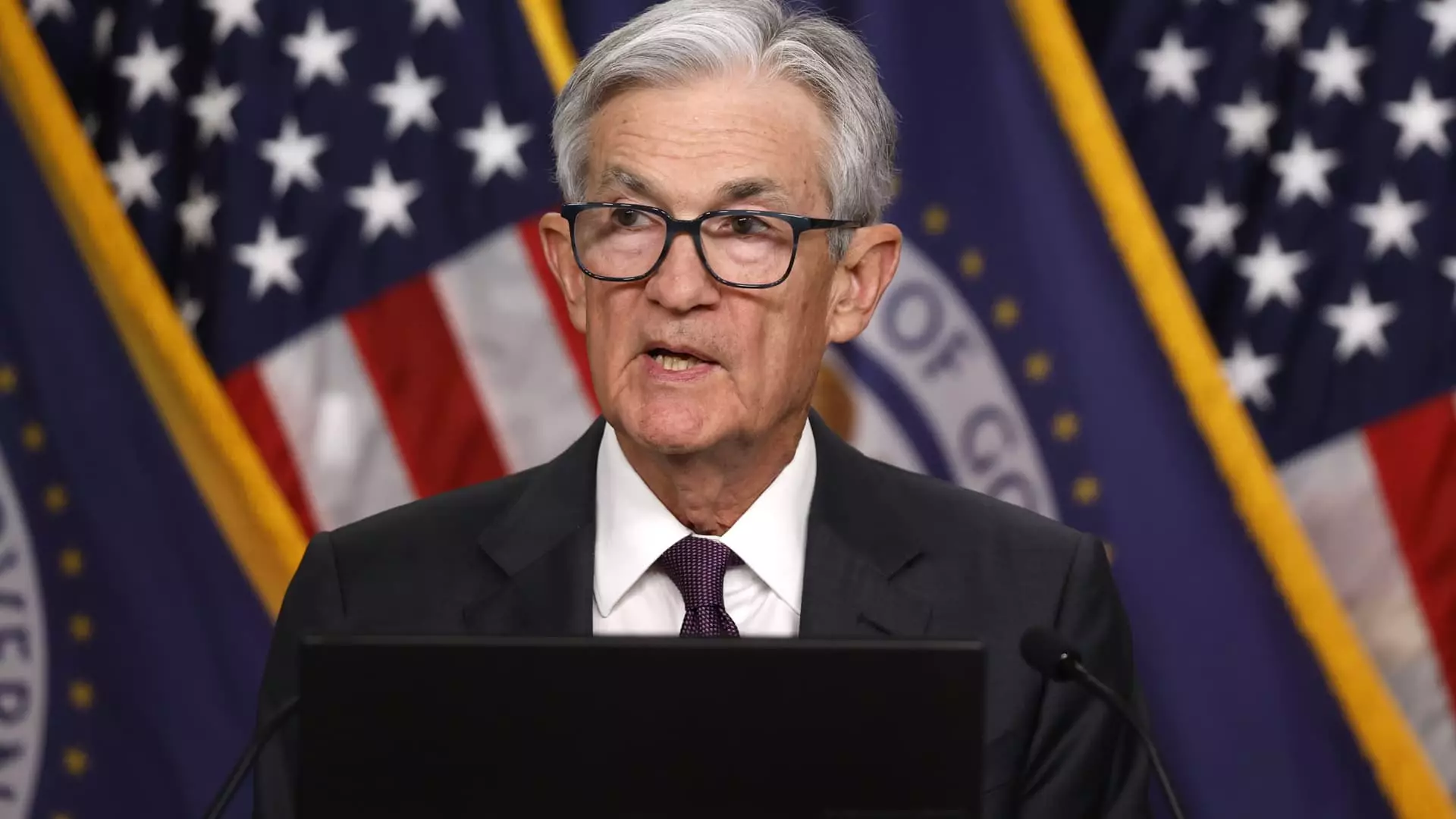In an economically volatile environment dominated by shifting trade policies, the Federal Reserve’s choice to keep its key interest rate unchanged at 4.25%-4.5% raises numerous questions. The decision, seen as lacking in dramatic tension given the current political and economic chaos, seems grounded more in caution than conviction. In an era where quick adjustments are paramount, the Fed’s apparent reluctance to act on immediate economic warnings illustrates a hesitance that may ultimately lead to stagnation and uncertainty.
The leadership of Chair Jerome Powell has become a focal point for criticisms questioning the efficacy of such a restrained monetary policy. Rather than providing clear guidance during challenging times, the post-meeting announcement merely echoed vague sentiments of uncertainty. Powell’s language foreshadows potential doom, indicating that the risks surrounding inflation and unemployment are growing. This kind of ambiguity does little to inspire confidence in consumers or businesses already wary of the climate created by the Trump administration’s erratic trade strategies.
A Trade Policy Paradox: Tariffs as a Double-Edged Sword
The nuanced complexities of President Trump’s tariffs present a unique dilemma for the Fed. These tariffs, which were positioned as a means to protect American workers, have instead become a source of economic disarray. The statement by the Fed—which indicated tariffs could inflate prices while simultaneously dampening growth—hints at the possibility of stagflation, that toxic cocktail of stagnant economic growth coupled with rising inflation that has largely evaded the American economy since the early 1980s.
This paradoxical scenario becomes even more troubling when you consider how trade negotiations, which are unpredictable at best, could exacerbate or alleviate these economic pressures. The failure of the Fed to cut rates during this precarious state signals an alarming level of complacency or, perhaps, an unwillingness to fully confront the challenges posed by the tariffs. The risks of higher prices and job losses loom large, and yet the Fed seems content to embrace a wait-and-see policy.
Wall Street’s Response: Optimism in the Face of Uncertainty
Despite the Fed’s cautious stance, Wall Street has shown resilience, as evidenced by a partial recovery of the Dow Jones Industrial Average post-announcement. This indicates investors are either overly optimistic or remarkably indifferent to sovereign uncertainties. The apparent disconnection between market performance and economic realities raises eyebrows. It presents a troubling dichotomy: can stocks rise amid potential economic turmoil generated by misguided fiscal policies?
Market analysts have suggested that ongoing negotiations could yield positive results. However, the reality is that the foundational signals of the economy indicate underlying challenges, including a contraction in the gross domestic product and anxiety among business leaders over supply chain disruptions induced by tariffs. If the Fed cannot navigate these turbulent waters with effective monetary policy, the illusion of stability projected by Wall Street may shatter when reality strikes—after all, markets can only remain bullish for so long amid adverse trade developments.
Job Growth and Inflation: A Risky Balancing Act
At first glance, America’s job growth appears robust, with the addition of 177,000 jobs in April. Yet, juxtaposed with the broader economic picture, one must question the sustainability of such growth. Nonfarm payroll figures and an unemployment rate held steady at 4.2% do not tell the full story—what happens when businesses begin to face the repercussions of tariffs that disrupt trade and supply chains?
Furthermore, inflation appears to be losing momentum, flirting dangerously close to the Fed’s target. While Powell may feel he has room to maneuver, the unexpected consequences of the tariffs could provoke unforeseen spikes in prices. After all, the Fed’s monetary policy is deeply interconnected with consumer debt, making the public vulnerable should inflation rear its head unexpectedly.
Market Predictions and the Threat of Delay
As traders anticipate potential interest rate cuts, the Fed’s inability to act decisively casts a shadow over future projections. Financial markets thrive on certainty, yet the volatility of current Fed action—or inaction—introduces a layer of anxiety among both investors and consumers.
With pricing indicating a high likelihood of rate cuts down the line, the Fed’s steadfastness may ultimately result in a game of catch-up as it struggles to respond to actual economic conditions. Waiting for clarity in trade negotiations is a strategy with significant risks; indecision could leave the Fed sprinting to restore a semblance of control over an economy that may slide into deeper turmoil.
In the absence of decisive action, the Fed not only risks its own credibility but also imperils the national economy. The landscape is shifting rapidly, and moments of stagnation within policy-making leave much to be desired. For citizens who rely on a stable economic environment to thrive, the time for audacity, rather than caution, is now.

